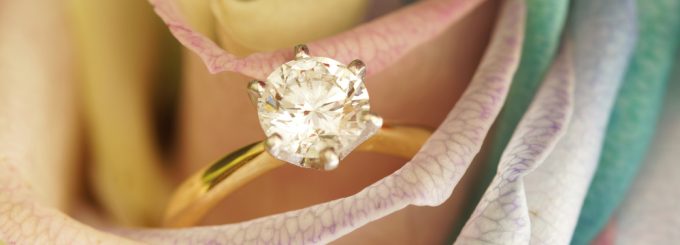Why Rose Cuts are Used in Jewelry

The earliest rose cuts consisted of stones which were altered by using only minimal changes with light polishing prior to being set within jewelry. Classic examples of this include table or point cuts, but glitzier and more fashionable techniques have been developed over the centuries.
What is a Rose Cut?
Rose cuts have traditionally been dependent on the stone’s shape. In the past, jewelers preferred stones that were readily fashioned into a flat bottom and dome topped style. As time passed, clever diamond cutters devised newer techniques, which allowed for more intricate facet arrangements with pleasing outlines. Jewelers in Antwerp and Amsterdam became renowned for their Dutch rose cuts, which used an ornate facet arrangement in groups of 6.
While the stone’s outline was still mainly influenced by its external rough shape, the capacity to come up with outlines that showcased greater precision became possible as the result of more advanced cutting tools. The rose cut offered a bigger yet lighter surface area with higher scintillation and brilliance, which gave such stones an enduring popularity during the Georgian period.
Between the 18th and 19th centuries, jewelers developed the capacity to set their diamonds inside open back mountings that were airier and lighter. This style of diamond cutting became popular in the U.S. around 1900, but over the last century has become rarer, and because many of the diamonds that use this cut have become vintage merchandise, growing demand for rose cuts has occurred in some areas of the world during the twenty first century.
Rose Cut Characteristics
The most basic rose cut ranges from 3 to 6 facets which are ground within a crystallized tip that uses a bottom which is flat. These stones tend to be quite flat but are sometimes found with spherical outlines. The rose cut first emerged during the sixteenth century and advances in technology since then have allowed the facet number to increase, along with positioning near the crown.
Contrary to popular belief, rose cuts are rarely symmetrical, and instead usually manifest irregular outlines. Once the six facet rose cut was developed, it was easier to transition into the twelve facet rose that is crowned. This is because it utilizes a 2nd facet row, and the intermediate stage between a complete rose cut as well as the most basic cut provides a degree of brilliance without dispersion.
The most advanced rose cut has 24 facets. To create it, sections must be cleaved off from dodecahedral crystals as this creates the perfect foundation. The bulky portion may be fashioned within a stone that is pavilion based while its tip uses a standard three facet rose. The expression “double rose” is used to reference a single stone that utilizes a rose cut for its pavilion and crown. During the Middle Ages gems featuring rose cuts were popularly used in pendants.
By the 19th century, the Netherlands had become a major diamond center thanks to the ability of their jewelers to cut many facets within crowns, leading to a rivalry between the cities of Antwerp and Amsterdam.


